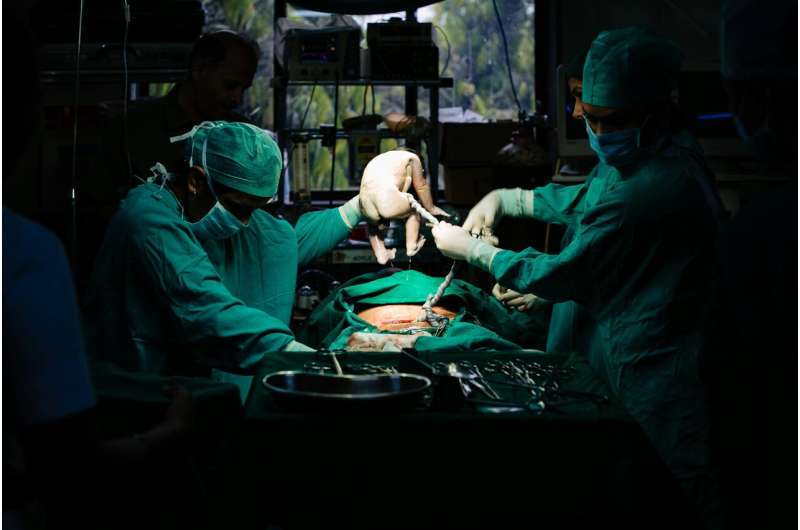There are normally three vessels within the cord. The one carrying oxygen and nutrients to the fetus is the umbilical vein. It passes through the umbilicus and feeds into the developing fetal circulation. There are also two umbilical arteries, though these carry deoxygenated blood and waste products, flowing in the other direction back to the placenta.
This circulation is not needed after the baby is born, and once disconnected from the placenta the umbilical vessels naturally close up. But the little stump of cut cord left clinging on can still be of use for a short time, especially in newborn babies who are poorly. The vessels can have drip lines inserted and be used for infusions of medicine, or have blood samples taken from them for testing.
The umbilicus is a portal in the wall of the abdomen—it’s a little-known fact that during your embryonic development your intestines actually have to leave your abdominal cavity because of limited space, but return a few weeks later. They do so via the umbilicus, passing into the cord.
As a result the umbilicus is not just an access point, but a point of weakness. An umbilical hernia occurs if a section of intestine pokes through any gap. This may require an operation to correct it.
Poor Sister Mary Joseph Dempsey. She was a nun who devoted much of her life to the care of patients in a hospital in Minnesota. She trained as a nurse, later becoming a surgical assistant to the doctor William Mayo. It was during this tenure that she highlighted an interesting observation.
At the time (the late 19th century), cancers of the abdomen and pelvis were typically diagnosed much later, and unfortunately were often more extensive. We call this process metastasis, where a cancer starts in one organ or location, then spreads to another.
This is the first time there is a therapy for people suffering from pronounced forms of pulmonary hypertension. “Further studies are needed to confirm and explore the benefits of this new stem cell therapy,” Professor Hansmann emphasizes. The research was published in Nature Cardiovascular Research.
PAH is a disease in which the blood pressure in the pulmonary circulation is chronically elevated—hence the name pulmonary hypertension. The cause of the high pressure is usually narrowed lung vessels and/or a loss of these vessels. The disease is progressive and usually fatal. In advanced stages, PAH is considered non-curable. The currently approved PAH drugs are mainly aimed at vasodilatation.
Repetitive mesenchymal stem cell therapy is based on cells from the umbilical cord of newborns and is also called HUCMSC (human umbilical cord mesenchymal stem cell). The researchers’ analyses showed that the products of these stem cells from the umbilical cord were able to improve regeneration in the damaged blood vessels, inhibit inflammation of the blood vessels and curb damage to certain parts of the cells.
“We have evidence that this HUCMSC-derived therapy had multiple beneficial effects: in the heart of the treated patients, it mainly protected the energy-providing mitochondria, and in the lungs the treatment mainly inhibited inflammation and stimulated regeneration,” explains Professor Hansmann, “We can show that the proteins, lipids and prostaglandin E2 are enriched in the stem cells and its products, and that MSC-derived therapy modulate several key signaling pathways of PAH at once.”
The new therapeutic approach now published was made possible via a collaboration between Professor Hansmann and Professor Dr. Ralf Hass from the Department of Gynaecology and Obstretics at MHH. A very large team of scientists, researchers and doctors helped to implement this “individual healing experiment”. Professor Hansmann infused the conditioned medium of the mesenchymal stem cells thus generated directly into the pulmonary arteries twice in the cardiac catherlab and three times via a central body vein.
Further so-called omics analyses of the stem cells and their products from multiple umbilcal cords were carried out by Professor Hansmann’s research group as well as by collaboration partners at the University of Leiden (NL) and the Charité Berlin. Professor Hansmann came up with the new therapeutic approach for PAH through preliminary experiments with animal mesenchymal stem cells, which he had conducted in 2011 and 2012 at Harvard Medical School in Boston, but also through in vivo experiments conducted by his research group at MHH—and ultimately through the request of the parents.
